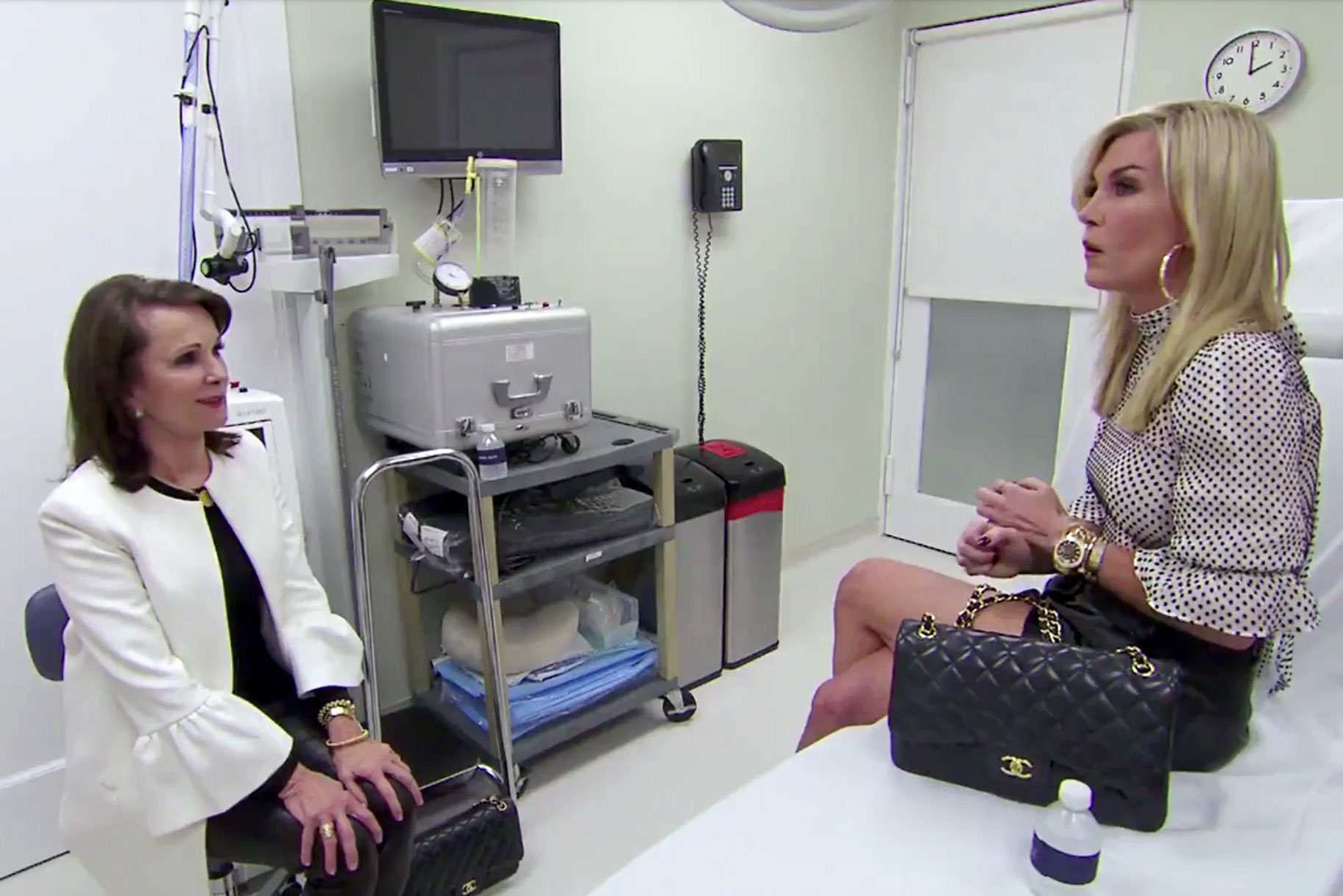Botox Isn't Just for Wrinkles: Here's What Else the Real Housewife-Loved Injections Can Treat
Did you know that people use Botox injections to treat TMJ, chronic migraines, and overactive bladders?

This week’s episode of The Real Housewives of New York City started with a bang. Or more specifically, a shot… of Botox. Tinsley Mortimer brought her mother, Dale, along to a dermatologist appointment for some Botox injections — but this wasn't the wrinkle-freezing session we're used to seeing on The Real Housewives. Tinsley explained she was injecting her jaw to help relieve Temporomandibular Joint Pain (TMJ) caused by teeth grinding. Apparently, Botox injections can help with this.
Tinsley isn't the only Bravolebrity to try Botox in her jaw for teeth grinding issues; Vanderpump Rules' Jax Taylor also recently got the treatment done at his plastic surgeon's office. This piqued our interest: What else can Botox be used for? We got the scoop from Dr. Mitchell Brin, who is the Chief Science Officer at BOTOX®. Dr. Brin explained that, although there is evidence that supports Botox can help with that issue, that particular use isn't officially endorsed by the manufacturers. Read on to learn about the several unconventional ailments Botox is approved to treat.
1. Chronic Migraines
People who suffer more than 15 headache-days a month with pain lasting longer than four hours fall into the chronic migraine category. For this condition, there are 31 proven injection sites, divided across seven specific head and neck muscle areas.
Common injection sites include by the inner end of the eyebrow, the area between the eyebrows, the area that wrinkles when the forehead is raised, the side of the head, the back sides of the head, the back below the head, and the upper back shoulder blade area. The usual recommended re-treatment schedule for chronic migraines is typically every 12 weeks.
2. Excessive Sweating
The medical term for this condition is called hyperhidrosis, and although there are people who experimentally use injections for their sweaty palms and scalps too, it is technically only approved to help excessive sweating in the armpits (primary axillary).
If you suffer from very wet pits that can’t be controlled with normal deodorant or topicals, this could help. The shots can be repeated when the effect of a previous injection diminishes.
3. Overactive Bladder (OAB)
This potentially embarrassing condition is bladder dysfunction with a strong need to urinate associated with leakage, urgency, and frequency. For this type of therapy, the medicine is injected into multiple areas of the bladder muscle through a small tube called a cystoscope. This typically helps for about 24 weeks, but if the symptoms return, the treatment can be repeated sooner.
The treatment is also approved to help unwanted peeing called urinary incontinence (Detrusor Overactivity). This particular form is usually associated with a neurologic condition, such as a spinal cord injury or multiple sclerosis, which causes involuntary bladder spasms that squeezes the bladder muscles suddenly without warning causing an urgent need to pee and/or leakage. When used for this condition, it usually lasts for about 42-48 weeks.
4. Involuntary Eye Muscle Spasms
The medical term for this condition is called Blepharospasm, which results in uncontrolled involuntary blinking, narrowing, spasms, and closing of the eyelid. Additionally, it can also help people who suffer from cross-eyes (strabismus). There are three approved injection sites for the treatment of blepharospasm, which include the outer upper and lower lids, and the inner upper lid. Each treatment lasts for approximately three months, following which the procedure can be repeated.
5. Muscle Stiffness/Tightness
The medical term for this is called Focal Spasticity, which occurs when certain muscles in your body become stiff or tight in the upper and/or lower limbs. According to research, 58 percent of stroke survivors experience spasticity that interferes in their recovery.
When treating with injections for upper limb spasticity, it can help patients decrease the severity of increased muscle tone in elbows, wrists, fingers, and thumb flexors. Approved injection sites include muscle groups in the arm and hand. The injections are also approved to help with lower limb spasticity, which can help decrease the severity of increased muscle tone in ankle and toe flexors by injections in those muscle groups.
6. Uncontrolled Head Tilt
The medical term for this is Cervical Dystonia, a condition in which neck muscles contract involuntarily, causing the head to turn or twist to one side or tilt. The dosing and injection site is tailored to each individual patient based on the abnormal head and neck position, localization of pain, and other factors. Typically patients see a noticeable difference two to six weeks after the injections, which last for about three months.







